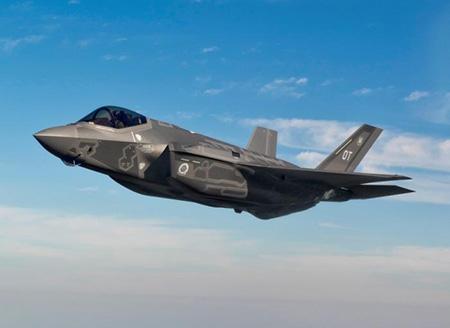Stillion had not only foreseen the poor capacity of the F-35, but also proposed a solution. The study, edited by the Center for Strategic and Budgetary Assessments, was published last April and was taken as a reference by the War Is Boring website (the same that published the F-35 Vs F-16 exercise report).
"It was the 2008. The F-35 was still in the middle of its 400 billions of dollars development. The costs continued to rise and soon, from the Pentagon, they would realize the technical problems that would delay the entry into service of the fighter for several years. In August of that year, the Rand Corporation, California think-tank, published an air simulation study. Along the Taiwan Strait, a clash between Chinese and American fighter had been simulated. The American formation, formed by F-22 and F-35, would have entered the battlefield from the bases in Japan and from the island of Guam ".
It was Stillion, a former Air Force air tactics instructor, to take care of the study entitled "Pacific Vision". In the simulated scenario, 72 Chinese fighters patrolled the Taiwan Strait. Against this force 26 American hunters were raised, the only survivors from a previous enemy missile attack that destroyed all the allied outposts.
The US force consisted of 10 F-22 and 16 F-35. The F-22 immediately engage the enemy, launching all the missiles available. Some of these missiles reach the target, but the Chinese continue to advance. The order is then given to the sixteen F-35 left behind to recruit the Chinese fighters.
"In all the simulations carried out, the bulky and F-35 lenses, designed to meet the needs of the Air Force, the Navy and the Marine, have been cut down".
"The F-35 is doubly inferior: poor acceleration and climb speed".
Note that Stillion poses against the Chinese hunt the latest version of the F-35, the one with all the upgrades that should be implemented in the hunt within the 2040, but despite all the outcome was the same.
Seven years after that study, the report of the simulated clash between the F-35 and a F-16 published on the War Is Boring site emerges. In the study, Stillion also proposes a solution. "For decades, the US, China and Russia have invested billions of dollars to build fast and very agile fighters, even trying to give them low observability to enemy radars. But the Americans themselves failed to create a fighter that could be superior to their Russian or Chinese counterparts. The F-35 is a mid-level fighter that would almost certainly have the worst in any modern battle. "
For Stillion, the Pentagon's obsession with speed and maneuverability needs to be reviewed. "The goal in an air crash is always the victory, isn't it? And to get it you don't need to be fast or agile, considering the expensive compromises needed for a cell that should be stealthy and agile ”.
After analyzing 1400 air combat between the 1965 and the 2002, Stillion concluded that the avionics and missile capacity are more important than speed and maneuverability. "If an aircraft, escorted perhaps by armed drones, could spot an enemy from afar and if it had the chance to target it with dozens of missiles, how much would its speed and maneuverability count? Especially if its low speed and lack of agility were compensated by a sixth generation sensor suite and by dozens of missiles ".
What does Stillion claim? A fusion of the American culture of the best existing technology with the Russian / Soviet philosophy of being armed to the teeth?
"The Sixth Generation Hunt? We already have it. Indeed, we have many that can be optimized as heavily armed long-range platforms. Human presence on board is optional. "
"The sixth generation fighter? A B-2 bomber armed with Phoenix missiles (certainly Stillion has rethought the theory that gave birth to the beloved Tomcat, a missile platform to protect the fleet and not a pure fighter), escorted by swarms of X-47B ".
Stillion concludes his study by stating that in a clash of the future, speed and agility will be virtually nothing.
Franco Iacch
(photo: Lockheed Martin)












